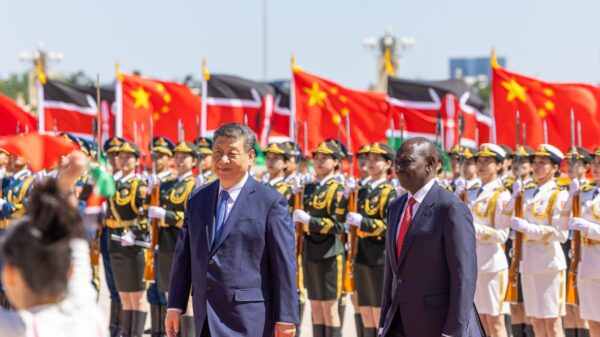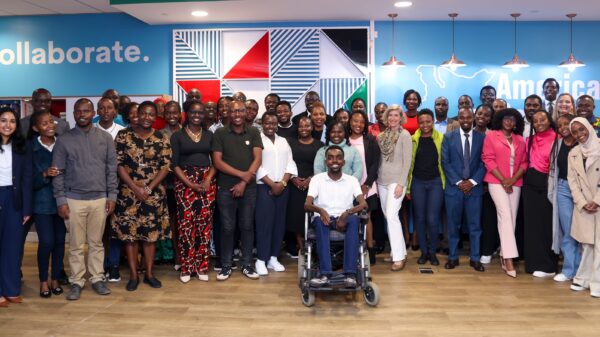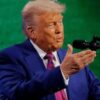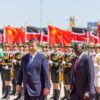The confirmation of a new agreement between the United States and China, emerging from high-stakes talks in London, has sent ripples through global markets—and rightly so. While the deal falls short of resolving the deep-rooted economic rivalry between the two superpowers, it signals a crucial shift: a move away from escalation toward a more stable and pragmatic engagement.
The agreement, which includes key concessions from both sides, offers hope for a recalibrated global order after years of mounting friction. China has agreed to resume exports of rare-earth minerals to the U.S.—resources critical for manufacturing electric vehicles, semiconductors, and defence technologies. These materials have long been a strategic bottleneck, and their renewed availability offers relief to industries worldwide.
In return, the U.S. will retain a 55% composite tariff on Chinese imports. This includes a 10% reciprocal tariff, a 20% levy on pharmaceutical products, and a 25% carryover from previous administrations. China, for its part, has imposed a 10% tariff on U.S. goods. Importantly, the agreement preserves key provisions of an earlier Geneva truce and establishes a framework for continued structured dialogue on economic and technological cooperation.
Former U.S. President Donald Trump described the deal as “a great deal with China,” highlighting its transactional aspects, including the assurance that rare earths and magnets would be “supplied up front.” Yet, its real significance transcends tariff details—it offers the world a rare moment of strategic de-escalation.
Over the past five years, worsening U.S.–China tensions have disrupted global supply chains, fuelled inflationary shocks, and paralysed multilateral institutions. This agreement doesn’t solve all those issues, but it establishes a floor beneath them—providing stability in an era of rising uncertainty.
The immediate global impact is substantial. The resumption of rare-earth exports lifts a critical pressure point for the tech and renewable energy sectors. The suspension of new tariffs brings predictability, giving industries and policymakers room to strategise beyond short-term crises.
But the London agreement’s greatest potential lies in the reopening of diplomatic space. When Washington and Beijing are at loggerheads, institutions like the WTO, G20, and IMF often grind to a halt. Their paralysis hinders cooperation on urgent issues like climate change, pandemic preparedness, debt restructuring, and AI governance.
The restored dialogue offers a rare opportunity to revive this global cooperation. The world’s two largest emitters must work together on climate. The same applies to managing health emergencies and setting guardrails around emerging technologies.
Just as crucially, the deal signals a tonal shift in diplomacy. In recent years, economic nationalism and zero-sum thinking have hardened global discourse. This modest agreement reminds the world that dialogue and compromise are still possible—even between strategic rivals.
Still, we must not overstate its reach. The deal doesn’t address deep structural issues such as intellectual property theft, industrial subsidies, or cybersecurity threats. Nor does it resolve the broader battle for technological supremacy. These remain flashpoints.
The agreement’s durability is also uncertain. Domestic political pressures in both countries—amid elections and leadership transitions—could unravel the fragile framework. The risk of renewed confrontation looms if either side believes it can gain more through brinkmanship.
Nonetheless, the strategic value of this moment is clear. The London deal pauses the dangerous trajectory toward economic decoupling and market fragmentation. It proves that dialogue is still within reach—even in this hyper-polarised era.
The world is at a crossroads: Will U.S.–China rivalry continue destabilising the global system, or can this window be used to build a more predictable international order? This agreement offers an opening—but it will take careful diplomacy and sustained political will to turn it into lasting progress.
For governments, businesses, and citizens alike, there is reason for cautious optimism. The agreement shows that even the most entrenched rivalries can be de-escalated, and that cooperation is still possible. Whether this becomes a new foundation for peace or a brief respite depends on what comes next.
One thing is certain: the world must not waste this opportunity. The future of global stability, prosperity, and security may well depend on it.
The writer is a journalist and communication consultant.













































